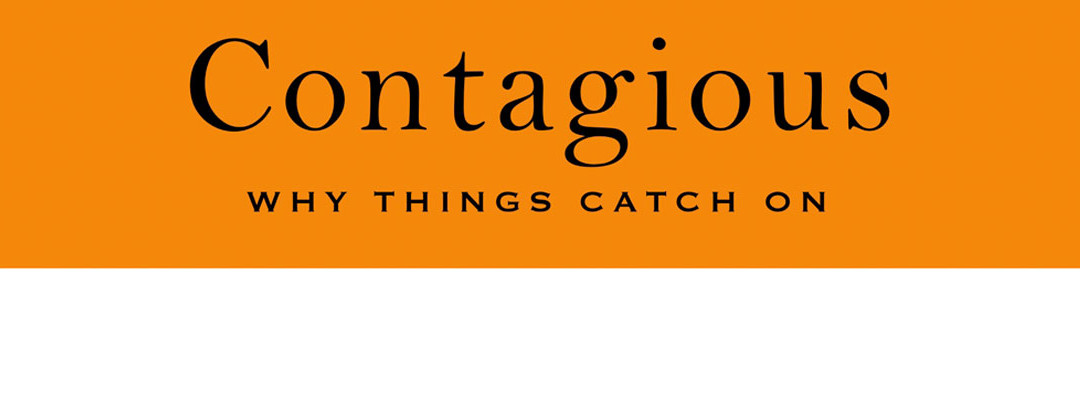Review: “Contagious: Why Things Catch On” by Jonah Berger
- Feb 12, 2018
- By Kalei
- In Advertisement, Reviews
- 0 Comments
I’m guilty of spending hours scrolling through my Facebook feed watching viral videos (and you probably are too), but I never thought about what brought those videos to my home page—what caused this advertisement to surface among the millions of other funny commercials? Why is this dog waddling across a kitchen more share-worthy than a video of my own pug? Contagious: Why Things Catch On by Jonah Berger explored these ideas. What creates viral content, and how can you do this for your own business?
Contagious is sorted into a six “STEPPS” process: Social currency, Triggers, Emotion, Public, Practical value, and Stories. Berger combines years of research on viral content, to find out exactly what the formula is to replicate this for your business. He does a great job at describing what each step means, and then how it can apply to business and advertising. I especially enjoyed his use of examples of existing content in order to supplement each piece of the formula.
Social currency describes why people share things that they think make them look good. Sharing recent news that others don’t know about yet makes you seem smarter, sharing a funny video demonstrates your sense of humor, and hot new gossip makes you seem “in the know”. People don’t talk about things that reflect badly on themselves, so it’s important to craft a message that seems to benefit the audience in a social setting.
Triggers are exactly what they sound like: how often does the topic come up. Berger poses the idea that you may assume people talk about Disney World more than Cheerios, and goes on to prove that that’s not true at all. Cheerios are relevant almost every single morning, while Disney World hardly comes up as a topic of everyday conversation. How can you tie your content to something that will have frequent relevancy?
Emotion is a key driver for most people, but exactly what about emotion? Berger explores the idea that there are two categories of emotion: high arousal emotion and low arousal emotion. High arousal emotions (like awe, excitement, and anger) drive an audience to action—they share the content because they’ve had a spark lit under them (good or bad). Low arousal emotions like contentment or sadness leave the audience in a state of mind that they don’t feel like spreading the content.
Public is all about how the content is perceived by a more general audience. Berger talks about the dilemma of the Apple on the back of Apple laptops—should they make sense to the user, or to the general public as the laptop is being used? People imitate those around them, so it’s important that your message is available to a broad audience in a conveniently displayed way.
It only makes sense that people share things with some sort of practical value. I can’t tell you how many cooking videos, “life hacks”, and articles about health and wellness pop up on my newsfeed every day. People like to be helpful, and share things that they think might be beneficial to others, so it’s key to make your content practical to share.
Finally, stories. Berger shows the importance of weaving a story throughout your content, to make people want to be involved, and then goes on to explain how your branding must also be integral to the story to make the cut. He gives examples of good uses of stories, and bad uses of stories, and delves in to the importance of making sure that your brand or company can’t be left out if someone decides to share the content.
I really enjoyed reading Contagious, because not only did it make me think about the content that I create as a marketer, but it made me reconsider why I share the things I do. It takes a compelling video or blog for me to pass it on to others, yet I do this every day. The book is completed with a series of checklists and guidelines to follow when designing content that you intend to go viral, which is a useful tool for an entrepreneurial marketer.
Recent Posts
-
 My Final Case Competition – Starbucks & Kombucha
March 23, 2018
My Final Case Competition – Starbucks & Kombucha
March 23, 2018 -
 HCDE: Intended and Unintended Consequences of Pokemon GO
March 6, 2018
HCDE: Intended and Unintended Consequences of Pokemon GO
March 6, 2018 -
 Review: “Contagious: Why Things Catch On” by Jonah Berger
February 12, 2018
Review: “Contagious: Why Things Catch On” by Jonah Berger
February 12, 2018

